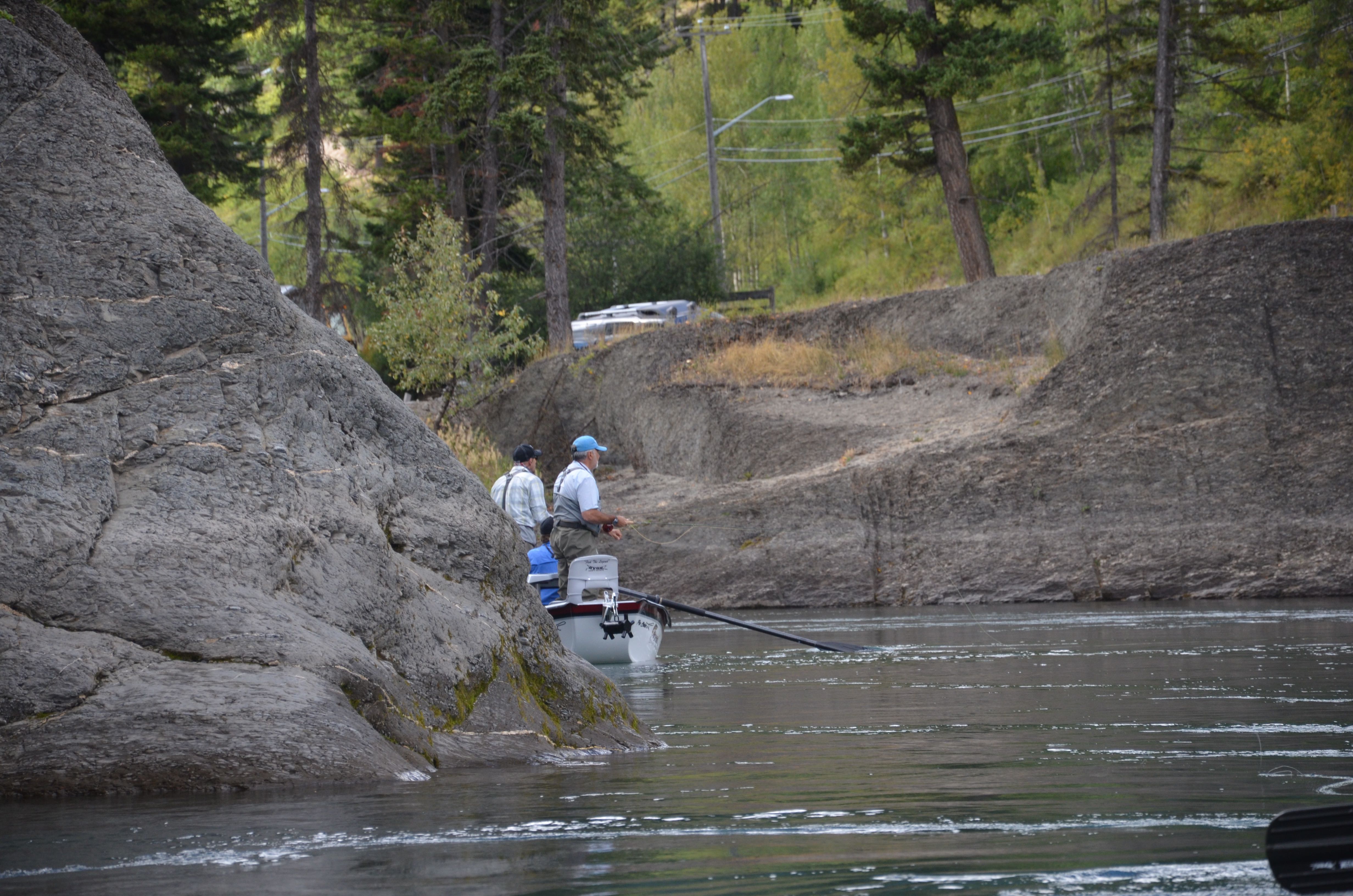
Fishing Tips: The Secrets to Drift Boat Success


Size, shape and colour frequently factor into fly-pattern selection. However, there are additional elements that should be considered. Bob Reece’s department in the summer issue of Fly Fusion discusses the wisdom of having translucency and vulnerability represented in your fly box. Among the flies recommended in the article is the Colby Crossland’s Klink Hopper. Pick up a copy of the summer issue of Fly Fusion Magazine on newsstands, in fly shops and available through subscription. Thanks to Bob Reece for article and tying vid!
Rod repairs are no fun for anyone. But the process can be made easier with modern technology, and Orvis has just introduced a new rod repair procedure that makes it seamless and quick for customers to return their rods for repair and track their progress. Visit Orvis online for details.

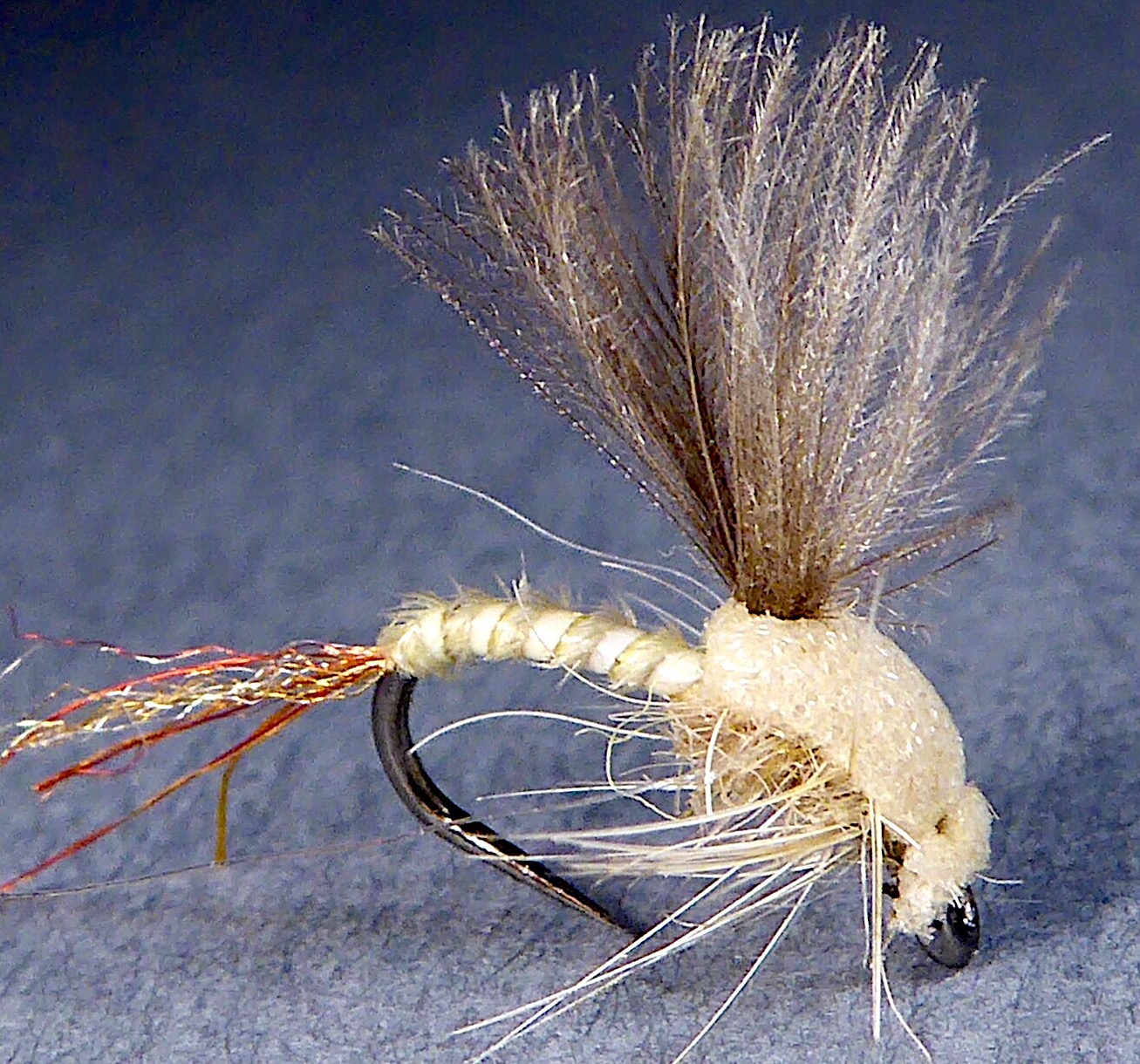
by Chris Williams
As one who has for years enjoyed fishing the tailwaters and spring creeks of the West, I have become enamoured with the trout’s propensity for keying in on emerging and crippled mayflies. When in this emergent stage, the mayfly is most vulnerable to predatory trout, and the fish soon figure that out.
With this in mind, I have designed most of my dry and emerger patterns from materials that move, are soft, and replicate the profile of a natural insect. Initially I used mostly natural materials such as furs and feathers, but with such a rich abundance of new fly tying materials on the market, some synthetic materials have found their way into my flies.
This pattern is a marriage of natural and synthetic materials to fit a very specific purpose, and it was several years in the making. I wanted to produce a fly that sat trapped in the surface film, but also retained excellent buoyancy, had a very lifelike appearance, and was easily visible. I’ve long been a huge fan of the beautiful spring-creek patterns designed by Idaho’s Rene Harrop. His flies epitomize realism and natural movement. Like Harrop, I have found CDC wings to provide these qualities. However, they always required a great deal of maintenance to keep them afloat. I incorporated a foam wing case to provide a platform for the CDC to sit on to retain better buoyancy. That platform also helps the wing stand upright for better visibility.
But I also wanted the wing case to look as if it were splitting to allow the wing to emerge. This was the most pressing problem in tying the fly. How do I get the wings through a hole in the foam? After a variety of disappointing attempts at both pushing and pulling the wings through the foam, I finally settled on using a small wire threader that’s designed to fit through the eye of the hook. The wire is thin enough to easily push through the hole in the foam without tearing it.
I also decided on a trailing shuck of antron dubbing with a bit of deconstructed Semperfli Glint Nymph for added sheen and softness, and for its realistic, translucent appearance when wet. By “deconstructed,” I mean a strand of Glint Nymph that I’ve scraped between my thumbnail and forefinger until the fibres separate. I then overlay it onto the Antron dubbing that has already been tied in. I’ve never been a huge fan of antron and Zelon shucks that are often preferred by tiers because of their stiffness. The dubbing is much more flexible.
The body material is a turkey biot which mimics the thin, segmented profile of the natural. The thorax is made of natural dubbing. Just enough hackle wraps are added to provide a good platform for the fly to land on, and to help keep it afloat.
I fish this fly like any emerger or cripple pattern. Usually it is cast to difficult, discerning fish on slow-moving water with multiple currents. My favourite approach is to target a specific fish and present a quartering downstream dead-drift with either an upstream or downstream mend, depending on the different currents. Occasionally, I move the fly ever so slightly if a trout is particularly selective, to give the impression of the mayfly escaping the nymphal case. When done properly, this has fooled some spectacular trout over the years.
While no fly pattern is perfect for every situation, this fly checks off all the boxes when fish are keying on emergers. The variety of materials with which it’s tied allows it to imitate the translucence, delicate profile, and movement of natural specimens while still providing buoyancy and visibility.
Materials:
Tying Instructions:
Check out Chris’ other patterns by clicking here and visiting him on Facebook.
(Editor’s Note: This article originally appeared in the spring 2018 issue of Fly Fusion Magazine under a different tier’s name. Chris Williams is the correct tier.)
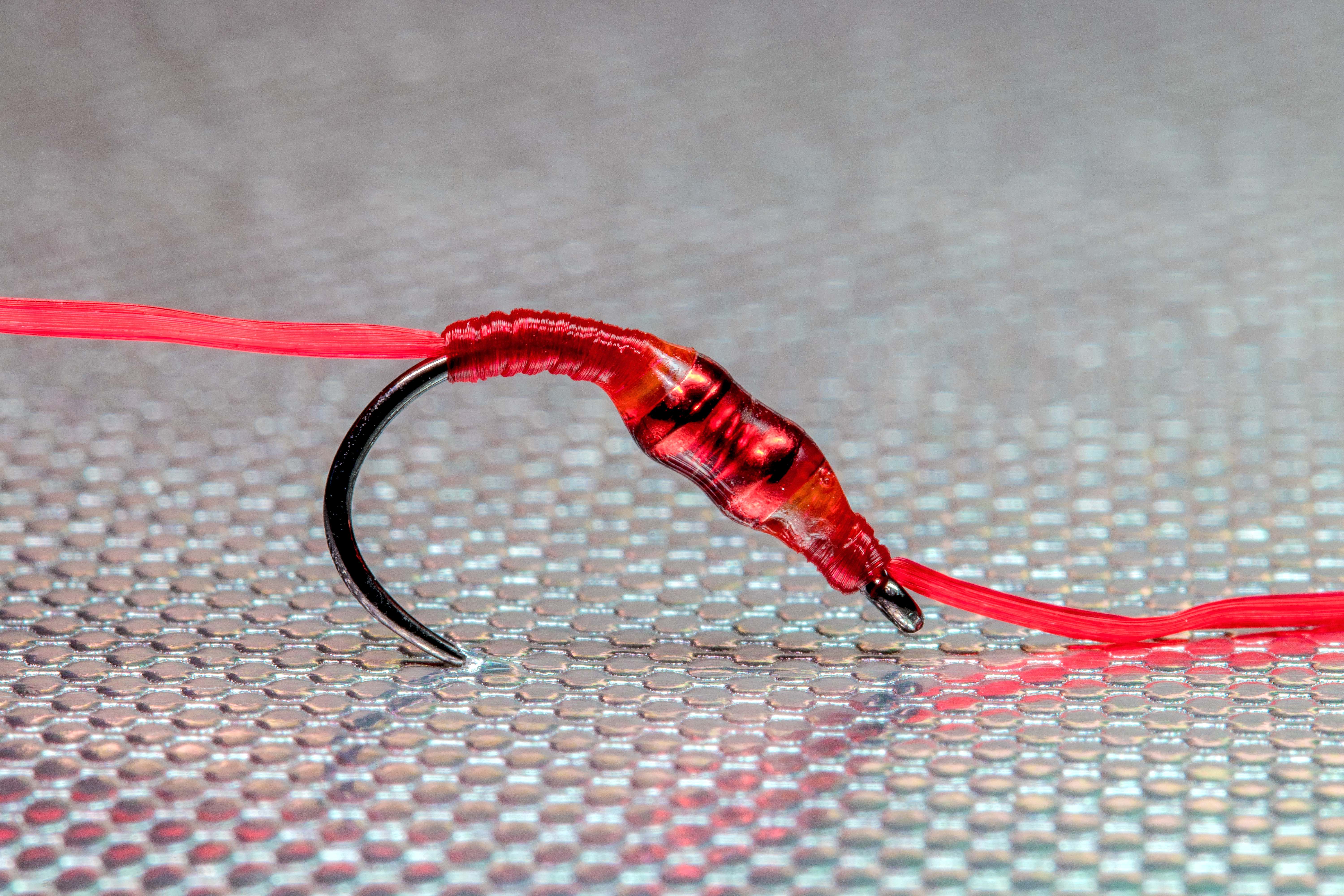
by Bob Reece
They may not be valued by all fly fishers, but aquatic worms play an important role in the food webs of many trout waters. Imitations of them can produce exceptional fishing throughout the year. Their abundance in some of the waters that I fish drove me to create my Glo Worm.
My objective was to create an annelid that could be effectively fished in indicator and tight-line riggings, but also as a dropper. To work as a dropper it needed to have sufficient weight, since I would not be able to add split shot. Tandem tungsten beads help the pattern descend quickly. By placing them at the midpoint of the shank, the hook is heavily keeled during its drift. This helps reduce snags as it glides over the substrate.
While the weight was important I also wanted a smooth contour. By using beads that were similar in colour to the body material, only a subtle variation of colour is visible. Applying beads one size smaller than the chosen hook size creates a gentler taper. The front of the beads face each other on the hook shank. This leaves the cavity of each bead available for finishing off the body material. It also forms a crisp cylindrical boundary of the bands as on the body of the natural. The appearance is further enhanced through the use of Tactical UV Resin. Additionally, UV material and Sexi Floss display a transparency similar to that of real aquatic worms. This combination of factors is bolstered by the tantalizing movement of the Sexi Floss strands.
Though atypical of rubber worm patterns, the thin profile of the Glo Worm is beneficial. This reduction of surface area, paired with its tungsten weight, rockets this pattern down to the set distance below the surface. It also lets me tie the pattern through a wider range of sizes, from size 8 down to 16. This package has fooled trout across all seasons and moving water fisheries. To watch tying video click here.
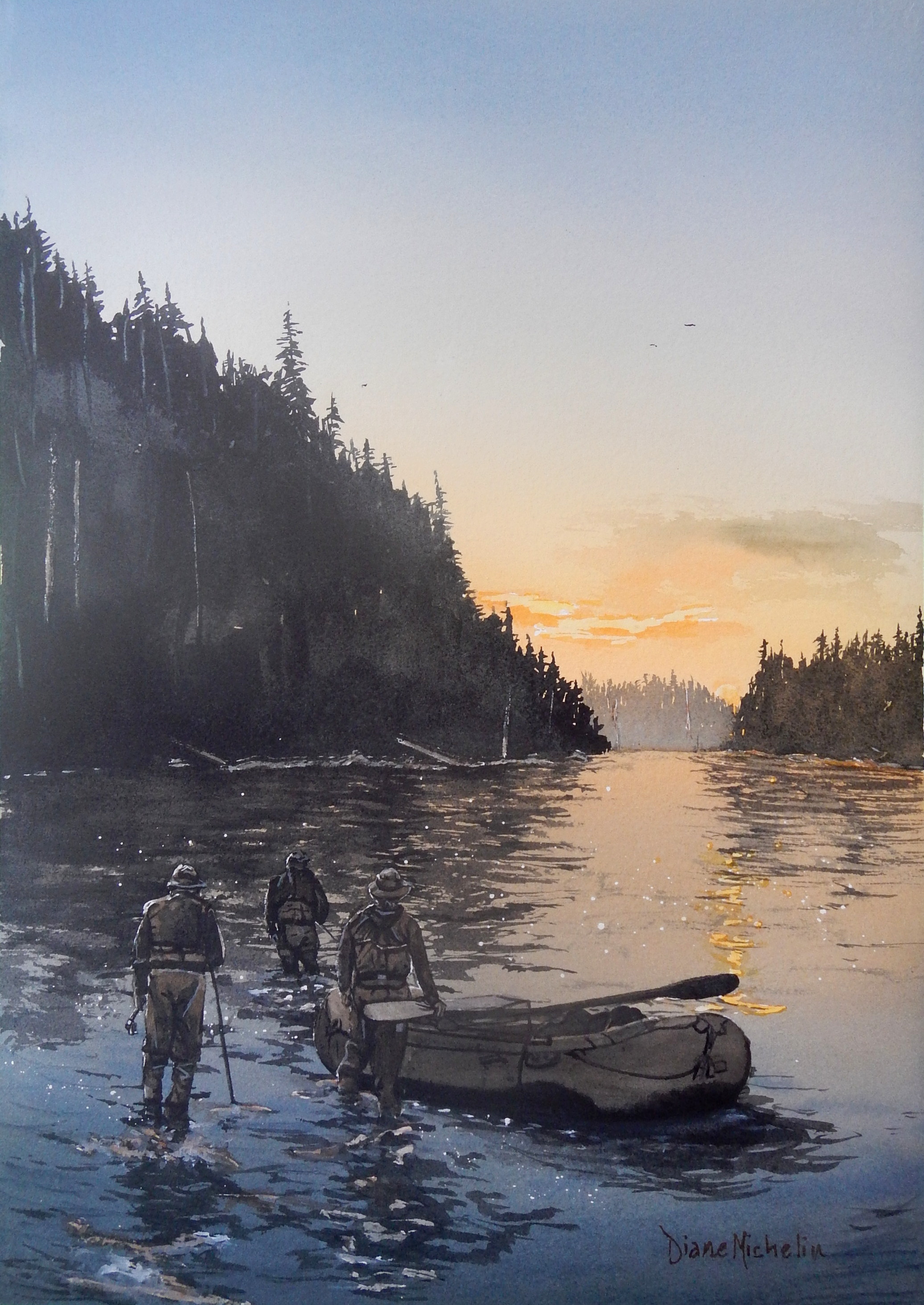
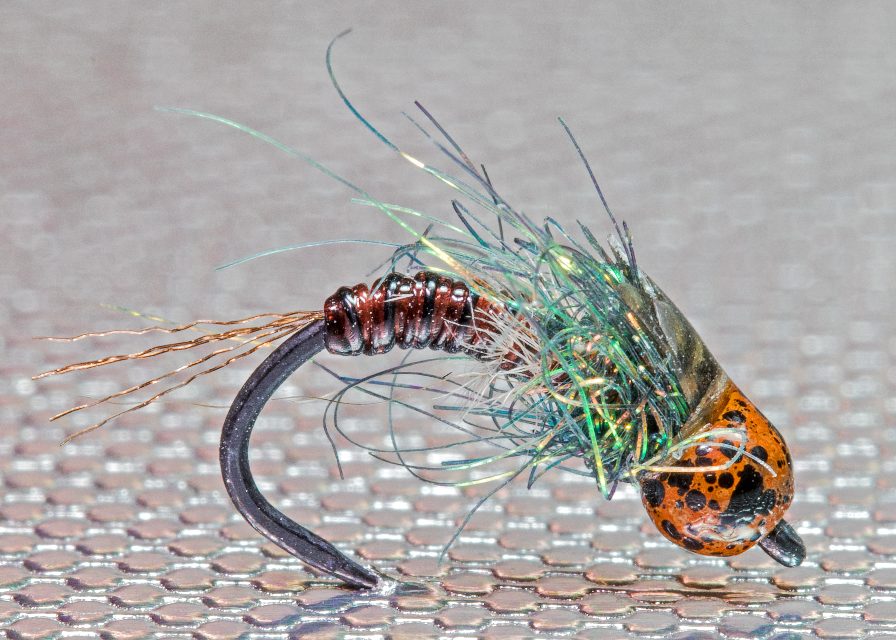
by Bob Reece
Transition stages in the subsurface development of aquatic insects are often times of vulnerability. During these metamorphic moments, the bug’s full range of motion and the responsiveness of its senses are temporarily lost. This means easy food for trout. With these factors in mind I designed my 307, a transitional mayfly pattern that is a productive divergence from the norm.
The Tiemco 2499BL-Bk hook pins itself in place in trout jaws with its upturned super point, and has the strength to handle large fish. Its matte black finish can be beneficial on heavily pressured waters.
Flouro Fiber forms the tail of this pattern. Small UTC wire inserted into midge stretch tubing is used to create raised segmentation in the abdomen. The smoothly raised divisions of the wire accent the transparency provided by the stretch tubing. This combination is very durable.
Ostrich herl and Ice Dub form the bulk of the thorax. Their movement and reflectivity suggest opaque appendages and internal gasses in the transitioning naturals. The enlarged and elevated wing case further accentuates this important trigger.
The mottled tungsten bead accelerates the 307 to the targeted depth. More importantly the mottled olive and brown colour provides a more natural look than the metallic sheen of traditional beads. This can be especially important in times of extreme water clarity. It is also beneficial on waters that see heavy fishing pressure.
Anytime mayflies are hatching, a properly presented 307 will produce fish. I often fish it as a dropper below my preferred dry in the early morning and late-day hours. During an active hatch I shorten my dropper tippet so the 307 rides six to eight inches below my dry. This can be deadly when the colouration of the fly matches the emerging mayfly. It’s also important to remember that many emerging mayflies fail to break through the surface film and subsequently perish. These failed emergers sink and drift along the bottom. As a result, the 307 is also an effective pattern for deeper water indicator-rigs. Click here to check out the tying video.
Fly anglers don’t always have access to in-depth bug charts when they’re out on the water, and sometimes entomology’s Latin terminology doesn’t stick all that well in the long term memory. One of Fly Fusion’s fly-tying editors, Al Ritt, provides a quick-reference entomology framework with ideas and patterns for anglers who want to go deeper and are looking for a good place to start.
A sneak peek recipe…please “Read More” for more recipes and to to read the full article.
Tail: Ringneck pheasant tail fibers
Rib: Fine gold wire
Abdomen: Ringneck pheasant tail fibers (butts of tail fibers)
Thorax: PMD Superfine dubbing
Spike: Deer hair
Hackle: Dun dry fly hackle
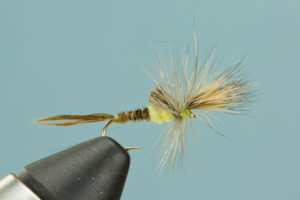
IDAHO FALLS, IDAHO (May 23, 2018) – RIO Products celebrates amateur film makers in the fly fishing arena with its second annual RIO Amateur Fly Fishing Film Awards. With many great films submitted for year two, Meris McHaney took away the grand prize for 2018 with her film Lucky.
McHaney wins an all-expenses paid trip to Idaho Falls to fish for three days with the RIO team, $300 value of RIO products, a $500 cash prize, and a “short film” category entry in the International Fly Fishing Film Festival (IF4) – courtesy of our media partner Fly Fusion magazine. The runner-up, “Matapedia” receives $500 worth of their choice of RIO Products.
Meris said, “I created this film to capture the passion I have for fly fishing and wanted to show people how beautiful the Texas Coast is and how the sport brought me closer with my dad. I’m so fortunate to get to sight cast to fish so close to home and I felt like the story I’ve had with fly fishing needed to be shared. I’m so thankful RIO hosts such a great competition for amateur filmmakers. The whole company has been so amazing and all the buzz from the film is very exciting. I can’t wait to get to Idaho to fish with the RIO crew and get some great gear; I’m so lucky they believed in me and my story.”
The Viewer’s Choice Award saw a tie between Ken Tanaka with “Obsession” and Mike Silva with “A Fish-mas Story”. They both receive $1,000 worth of Sage, RIO and Redington products, and the runner up will receive $500 worth of RIO products of their choice. See all submissions here.